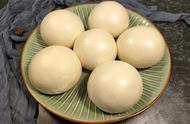点击关注“零食英语”,获取最实用的英语学习知识。

一、表语形容词和定语形容词
1. 所谓表语形容词,即指只用于连系动词后作表语,不能用于名词前作定语的形容词,这类形容词常见的有:
afraid 害怕的
alike 相同的
alive 活着的
alone 单独的
ashamed 羞愧的
asleep 睡着的
awake 醒着的
aware意识到的
ill有病的
well身体健康的
glad 高兴的
pleased 高兴的
sorry 难过的
content 满意的 等
2. 所谓定语形容词,即指只用于名词前作定语(即前置定语),而不用作表语,也不能用于名词后作定语(即不用作后置定语)的形容词。这类形容词常见的有:
daily 每日的
everyday 每日的
monthly 每月的
present 现在的
last刚过去的
plain 完全的
complete 彻底的
pure 完全的
perfect 全然的
upstairs 楼上的
downstairs 楼下的
mere 仅仅的
二、–ed形容词和–ing形容词
有人认为-ed形容词只用于人,-ing形容词只用于物,这说法太绝对,有时不一定对。正确的理解是:-ed 形容词表示“(某人)感到…”;-ing 形容词表示“(某事物)令人…”。
如:
People are interested in interesting stories.
人们对有趣的故事感兴趣。
He was annoyed with the annoying person.
他对这个讨厌的人很生气。
比较:
a frightened look 害怕的表情(指带有这种“表情”的人感到害怕)
a frightening look 吓人的表情(指这种“表情”令人害怕)
an excited talk 心情激动的谈话(指“谈话”的人心情激动)
an exciting talk 令人激动的谈话(指听“谈话”的人心情激动)
三、前置形容词的排列顺序
名词前的修饰语排列顺序通常为“限定词 形容词 名词”,若其中的形容词不只一个,则它们的排列大致遵循以下原则:
描绘形容词→大小(长短高低)形容词→形状形容词→年龄(新旧)形容词→颜色形容词→国籍形容词→材料形容词→用途(类别)形容词→名词
This is a nice(好看的)
small(小小的)
round(圆形的)
new(新的)
brown(褐色的)
French (法国产的)
oak(橡木做的)
writing desk(写字台).
注:形容词修饰不定代词要位于后面;另外,副词 enough 修饰形容词或副词时总是位于其后。
如:
There’s something unusual in her voice.
她声音有些反常。
The situation is serious enough.
形势够严重的。
四、类似 high 与 highly 的词语区别
一般说来,与形容词同形的副词通常表示具体情况,而带-ly 副词一般表示抽象概念,
如:
high 高地 → highly 高度地,非常
wide 广阔 → widely 广泛地
close 接近地 → closely 仔细地,密切地
deep 深地 → deeply 深深地,非常
另外,修饰形容词或在动词前通常只用-ly 副词。
如:
I bought this car cheap [cheaply].
我买这汽车买得很便宜。
This car was cheaply bought.
这辆汽车买得很便宜。
有时两者的意义相差很大。
如:
hard 努力地,坚硬地→ hardly 几乎不
near 不远,近 → nearly 几乎
most 最,大多数 → mostly 主要地,大部分,通常
late 晚,迟→ lately 最近
free 免费地,松动地 → free 自由地,随便地,无限制地
某些固定表达是否带-ly 视习惯而定。
如:
deep in thought 沉思
deep into the night 深夜
take it easy 别急
easy come, easy go 易得则易失
sound asleep 熟睡
wide open 完全开着
wide awake 完全醒着
五、形容词与副词比较等级的构成
1. 单音节和部分双音节形容词或副词通常加后缀–er和–est构成比较级和最高级。此时,还需注意:若原级以字母e结尾,则只加-r和-st;若原级以“辅音字母 y”结尾,则应将y改为i,再加-er和-est构成比较级和最高级;若原级为重读闭音节结尾,且末尾只有一个辅音字母,则双写这个辅音字母后再加词尾-er和-est构成比较级和最高级。
如:
long→longer→longest
large→larger→largest
busy→busier→busiest
big→bigger→biggest
2. 多音节和部分双音节形容词在其前加more和most构成比较级和最高级。
如:
useful→more useful→most useful
difficult→more difficult→most difficult
常见的不规则形容词与副词的比较等级变化:
good→better→best;
well→better→best;
bad→worse→worst;
badly→worse→worst;
il→worse→worst;
much→more→most;
many→more→most;
little→less→least;
far→farther / further→farthest / furthest;等。
注:less和least也用来构成比较级或最高级,表示“较不…”和“最不…”:careful→less careful→least careful。
六、使用比较等级的两个易错点
1. 误用双重比较等级,即在已经加了词尾-er的比较级前再加more。
如:
误:He is more better today.
(去掉more,若将more改为even等)
2. 误将自己与自己比较。
如:
误:Changsha is larger than any city in Hunan.
(应在any 后加other)
七、比较级和最高级的常见修饰语
1. 比较级的修饰语有:表示“稍稍”、“一点”意义的a bit, a little, rather, some, any 等;表示“…得多”的 much, far, a great / good deal, a lot, a good bit 等;表示“更加”意义的 still, even, yet 等;表示确定程度的修饰语,如分数或有关长度、时间、重量等名词词组通常放在比较级前,也可由 by 引出而置于比较级之后。
如:
It is even colder than yesterday.
今天比昨天还冷。
He looks a bit happier now.
他现在显得高兴点儿了。
Do you feel any better today?
你今天感觉好点儿了吗?
He is two years younger than me.
他比我小两岁。
He is a head taller than his younger sister.
他比他妹妹高一头。
This bridge is 10 meters longer than that one.
这桥比那桥长10米。
This bridge is longer than that one by 10 meters.
这桥比那桥长10米。
注:在修饰或代替复数可数名词的 more 前不可用 much,而要用 many;除 quite better 外,quite, very, so 等不可修饰比较级。
2. 最高级前可用 the very, the second, much the, (by) far the, not quite the, nearly, almost, by no means 等修饰。
He is far more careful than I am.
他比我仔细得多。
This is much the most important.
这是最重要的。
Hainan is China’s second largest island.
海南是中国第二大岛。
This is quite far the most expensive bicycle in the shop.
这是这家商店里最最贵的自行车。
注:very不能修饰比较级,却可修饰最高级,但它与一般的修饰最高级的副词有所不同,即它要放在最高级前的定冠词之后,而不是之前(另外,second, third, next等也要放在定冠词之后)。
八、重要比较结构归纳
1. as…as。意为“与…一样”,在否定句中,第一个 as 也可换成 so。
如:
He is as busy as before.
他还是像以前那样忙。
He isn’t as [so] old as he looks.
他不是看上去那么老。
2. more and more。意为“越来越”。
如:
Your English is getting better and better.
你的英语越来越好了。
3. the more, the more。“越(是)…,越…”。
如:
The more money you make, the more you spend.
你挣的钱越多,花的钱也越多。
4. more than 与less than。前者表示“多于”、“不只是”、“非常”等,后者表示“少于”、“不足”、“不太”、“毫不”。
如:
We waited for more than three hours.
我们等了三个多小时。
She was more than kind to us.
她对我们很友好。
It cost less than £5.
它的价钱还不到5英镑。
The boys were less than happy about having a party.
开晚会男孩子并不很高兴。
5. more …than 与 less…than。用于本义,前者指“比…多(更)”,后者指“比…少”;用于引申义,两者均可表示“与其…不如…”,但表达表式不同。
如:
He was more frightened than hurt.
=
He was less hurt than frightened.
他与其说受了伤,不如说受了惊。
He is more an expert than a teacher. = He is less a teacher than an expert.
与其说他是老师,不如说他是专家。
6. no 比较级 than。该结构主要用于对两个待比较的对象进行否定,意为“与…一样不”,相当于该原级形容词或副词的反义词使用as…as结构的意思。
如:
He is no cleverer than her.
=
He is as foolish as her.
他与她一样不聪明(即两人一样蠢)。
His English is no better than mine.
=
His English is as bad as mine.
他的英语同我的英语一样不好(即两人的英语一样差)。
注:由此可推知以下结构的意思:
(1) no more than的意思是“与…一样不多”、“只有”。
如:
He has no more than two dictionaries.
他只有两本词典。
(2) no less than 的意思是“与…一样不少”、“多达”。
如:
He made no less than£500.
他赚了多达五百英镑的钱。
(3) no more…than的意思是“同…一样不”(=neither ... nor)。
如:
He is no more a writer than a painter.
他不是画家,也不是作家。
(4) no less…than 的意思是“和…一样”。
如:
Your brother is no less wise than you.
你的兄弟跟你一样聪明。
推荐领取【2019初中各科提分资料】,包含8科目知识点归纳、汇总、复习资料、学习技巧与答题技巧等;附部分复习题与试卷资料。

优秀的你,点击右上角关注我们,转发本文章后私信回复:“801”,前往获得【2019初中各科提分资料(全部内容)】
更多语法知识,请看往期回顾:
,












